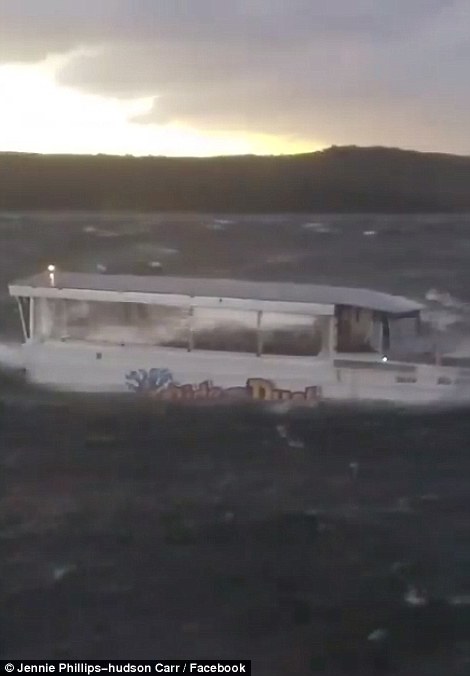Seventeen dead and seven injured after duck-boat carrying 31 – including at least three children – CAPSIZES on stormy Missouri lake, as final video shows its battle to stay afloat
Four more bodies have been pulled from the water where a duck boat capsized on Thursday night, bringing the total death toll from the tragedy to 17.
All of the victims were on board the Ride the Ducks amphibious vessel when a powerful storm rolled over the lake, lashing the water with 60mph winds at around 7pm.
Fourteen people survived, including the boat’s captain. Seven people were hospitalized with injuries.
Those who died range in age from one to 70. Among them was the boat’s driver.
The first 11 bodies were found on Thursday night and six more were recovered the next day.
The lake which is 229ft seep and has a surface area of 43,100 acres was partially reopened to the public on Friday morning.
Now, authorities must bring the boat wreckage back to the shore to investigate why it failed.
Due to a lack of light, divers wrapped up the operation about midnight and headed back to shore.
A top wind speed of 63mph was measured at 7pm, when the boat was on the water.
National Weather Service meteorologist Steve Linderberg said the winds were likely stronger over the lake, adding: ‘There’s nothing to slow down winds in an open area’.
Suzanne Smagala, of Ripley Entertainment, which owns Ride the Ducks in Branson, said the company was assisting authorities with the rescue effort.
She added this was the Branson tour’s first accident in more than 40 years of operation.
Duck amphibious vehicles have been involved in a number fatal accidents around the world in the past two decades, with some sinking or being swamped or others colliding with vehicles.
The vehicles have been involved in other deadly incidents in the past.
They include one in 2015 in Seattle in which five college students were killed when a boat collided with a bus, and one in 1999 that left 13 dead after a boat sank near Hot Springs, Arkansas.
Safety advocates have sought improvements to the boats since the Arkansas incident. Critics argued that part of the problem is numerous agencies regulate the boats with varying safety requirements.
